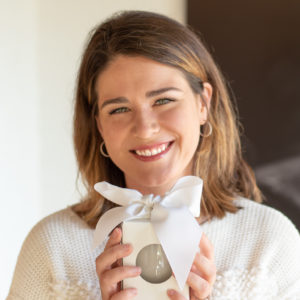Sustainability Q&A with the world’s first net-carbon neutral merchandiser
July 21, 2021
 Lou Cysewski is an EO member in Seattle, as well as the co-founder and CEO of Coolperx, the first net carbon neutral merchandising company in the world. She’s on a mission to transform the SWAG industry from a toxic polluter to a conscientious connector of people and values with a strong focus on sustainability. We asked Lou about her experience. Here’s what she shared:
Lou Cysewski is an EO member in Seattle, as well as the co-founder and CEO of Coolperx, the first net carbon neutral merchandising company in the world. She’s on a mission to transform the SWAG industry from a toxic polluter to a conscientious connector of people and values with a strong focus on sustainability. We asked Lou about her experience. Here’s what she shared:
What does it mean to be the world’s first net carbon neutral merchandising company?
Promotional products represent a nearly US$30 billion industry that produces about US$24 billion in landfill waste every year. On average, typical SWAG is only kept eight months by its recipients. With Coolperx, I wanted to help companies and consumers alike walk away from the industry of cheap, useless gifts and opt for quality, usable, sustainably-made gifts that actually build meaningful relationships and a sense of appreciation.
We developed our proprietary and accredited “Climate Cost Index” to evaluate the impact on the environment of all our products―from concept to end-of-life―which helped us further our environmental sustainability goals. We then made―and continue to make―decisions regarding our choice of product materials, packaging, shipping practices, etc. We also reclaim 100% of our business emissions and the emissions created by our sales by building clean solar energy in dirtiest parts of the US energy grid.
Is it profitable to be sustainable?
The biggest, most consistent reason companies continue to make harmful choices for the environment is because of their near-term profit mindset. The bottom line is that being sustainable is more costly upfront.
However, people today demand sustainably-made products. In recent studies, nearly six in 10 consumers are willing to change their shopping habits to reduce their environmental footprint.
Regarding corporate gifting, employees and customers want to feel good about the items they receive, knowing they are both intentional and good for the environment. There is mutual value conveyed when companies give conscientiously. In turn, this impacts employee engagement―and therefore performance―as well as customer attraction and retention. All this has a positive impact on a company’s bottom line.
So yes, sustainability is both the right and smart thing to do in today’s society.
What can business owners do to make their companies more sustainable?
Companies need to create an ecosystem where sustainable practices flow throughout their entire supply network and doesn’t stop with them. It’s one thing to reject practices that are harmful to the planet and yet another to require business partners, vendors, and suppliers at every level of the supply chain to do the same.
Here are four key takeaways to achieve this goal:
- Conduct risk assessments on suppliers before engaging in agreements to make sure they share the same environmental values.
- Incorporate accredited cradle-to-grave carbon life cycle analyses on all the products you purchase.
- Require suppliers to report on actionable sustainability metrics.
- Recognize and prioritize suppliers that hit sustainability benchmarks.
What’s your personal connection with the merchandising industry and gift giving?
Whether we like it or not, we look at gifts we receive as a reflection of how someone feels about us. They have the power to make us feel appreciated, approved of, and valued, or disregarded, snubbed, and taken for granted.
I started connecting the dots between the intention of the giver and the effect of the gift as a child. My mom―a first-generation Japanese-American woman―was 19 and single when she got pregnant with me and raised me and my four siblings with very modest means. At Christmastime, my dad―who was in and out of our lives growing up―would fill our stockings to the brim. At first, it was exciting! Until I found candies that I would never eat and toys I would never play with. At the time, I felt like my dad didn’t know me and didn’t care to know me. Instead of building a connection, these obligatory gifts damaged an already fragile relationship.
This experience had a profound effect on me, and I now teach companies how to meaningfully convey appreciation and integrate values through gifts and experiences.
What kind of leader are you?
I’ve always been attracted by calm and steady leaders who are driven primarily by service and purpose, rather than by power or money. They inspire and bring out the best in those around them. That’s the kind of leader I’ve always wanted to be. For me the service component of leadership is deeply personal too.
After 9/11, I joined the army―as the fourth generation to serve in the military in my family ―in order to become a medic and a nurse. Being an army nurse was a small part of my story, but it ingrained in me the values of serving and protecting. My goal as a leader is to build a culture of care and intentionality anchored around service.
I focused my work, as a newly minted civilian, on community health. I found myself wanting to make the world better, more equitable and to provide education to underserved populations. This was the beginning of my activism.
Both my time in the military and as a community worker have shaped my life and leadership style in a meaningful way.